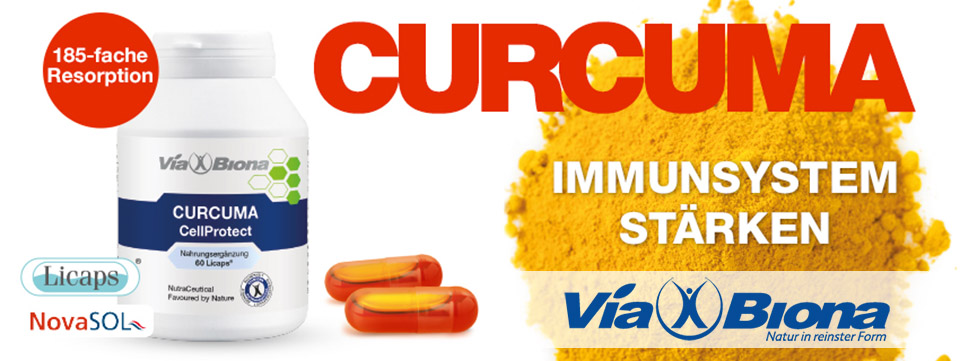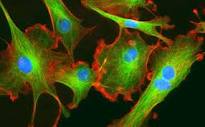Beschreibung
Cystein ist eine Aminosäure, die in vielen Proteinen des Körpers enthalten ist. Ihre Besonderheit ist die im Molekül enthaltene Schwefelgruppe (Disulfidgruppe, SH-Gruppe). Sie ermöglicht die stark antioxidative Wirkung von Cystein. Nach der Aufnahme von Cystein wird diese im Körper teilweise zum Schutzstoff Glutathion umgebaut. Glutathion ist für den Organismus von elementarer Bedeutung und an einer Vielzahl biologischer Stoffwechselprozesse beteiligt. Die Zufuhr von Cystein aus der Nahrung bestimmt, wie viel Glutathion im Körper hergestellt wird. Zugleich hat Cystein selbst viele Funktionen und ist neben der Glutathionbildung wichtig für die endogene (körpereigene) Synthese von Fettsäuren sowie von Taurin und der Strukturbildung des Bindegewebes.
Funktionen und Anwendungsbereiche von Cystein
Funktionen
• Antioxidative Wirkung
• Synthese von Glutathion
• Synthese von Fettsäuren
• Synthese von Taurin
• Bindegewebsstärkung
• Immunstärkung
Antioxidative Wirkung
Cystein – allein oder gemeinsam mit Glutathion – besitzt eine stark antioxidative Wirkung und schützt die Zellen vor Schäden durch Freie Radikale, die z.B. durch UV-Licht, Rauchen und Luftverschmutzung entstehen. Cystein wirkt damit der Entstehung degenerativer Krankheiten und dem Alterungsprozess der Zellen entgegen.
Synthese von Fettsäuren
Gemeinsam mit Pantothensäure (Vitamin B5) hat Cystein eine entscheidende Rolle in der Synthese von Fettsäuren, die in die Zellmembranen und die Myelin-Schicht (Hauptbestandteil der Schutzschicht von Nervenzellen) eingebaut werden.
Synthese von Taurin
Cystein ist die Ausgangssubstanz für die körpereigene Bildung von Taurin. Taurin spielt eine wichtige Rolle im Nerven-, Verdauungs- und Herz-Kreislauf-System.
Bindegewebsstärkung
Cystein ist zu 10 bis 14 Prozent als Strukturprotein des Bindegewebes in Haut, Haaren, Nägeln, Knochen, Muskeln und Sehnen enthalten und unersetzlich zur Ausbildung dieser Strukturen. Jeweils zwei Cystein–Moleküle sind dort durch ihre Schwefelgruppe, der Disulfidbrücke, verbunden. Diese verleihen dem Gewebe eine besondere Zugfestigkeit.
Immunstärkung
Cystein spielt eine wichtige Rolle im Immunsystem, da es die Glutathion-Synthese bestimmt. Glutathion ist eines der wichtigsten Regler-Moleküle in der Immunabwehr:
Glutathion ist an der Bildung der Leukotriene beteiligt, die die Leukozyten (weiße Blutkörperchen) aktivieren. Eine Unterversorgung an Cystein vermindert stark die natürlichen Killerzellen und es kommt es zu einer erhöhten Infektanfälligkeit.
Anwendungsbereiche
Therapeutisch wird Cystein bei folgenden Indikationen eingesetzt:
• Entgiftung und Leberschutz
• Alkoholkonsum
• Arthritis
• Immunstärkung
• Paracetamol-Vergiftung
• Haarausfall
Entgiftung und Leberschutz
Cystein wird therapiebegleitend zur Vermeidung von Leber- und Nierenschäden im Zusammenhang mit Überdosierungen von Acetaminophen (Medikamente wie Paracetamol und Ibuprofen) eingesetzt. Cystein und Glutathion helfen zudem, die toxische Wirkung von Umweltgiften wie Schwermetallen sowie bakteriellen Giften, Pestiziden, Formaldehyd, zahlreichen Komponenten in Zigarettenrauch und Autoabgasen unschädlich zu machen.
Alkoholkonsum
Cystein wirkt wie Glutathion leberschützend, indem es die toxische Wirkung des Alkohol-Abbauprodukts Acetaldehyd aufhebt.
Arthritis
Cystein ist in Kombination mit Pantothensäure hilfreich zur Linderung von Gelenkentzündung und Osteoarthritis (Knochenentzündung).
Immunstärkung
Cystein kann über Glutathion die Immunkompetenz stärken und entzündliche Prozesse abwehren. Cystein spielt eine wichtige Rolle für die Aufrechterhaltung der Immunität (Leukozyten, CD4-T-Helfer- und NK-Zell-Aktivität). Ein Mangel an Cystein begünstigt zudem die Allergieneigung.
Haarausfall
Cystein ist an der Bildung von Prokollagen und am Aufbau des Haarkeratins beteiligt. Bei Störungen der Haar-Bildung ist die Ergänzung mit der schwefelhaltigen Aminosäure Cystein zusammen mit dem Vitamin B-Komplex und Zink empfehlenswert.
Zufuhrempfehlung und Einnahmehinweise
Zufuhrempfehlung
Cystein wird in täglichen Dosen zwischen 400 und 600 mg empfohlen.
Gegenanzeigen
Bei behandlungsbedürftigen Erkrankungen, der Einnahme von Medikamenten und in der Schwangerschaft und Stillzeit ist mit dem behandelnden Arzt Rücksprache zu halten.
Einnahmehinweis
Die kombinierte Einnahme mit hochdosiertem Vitamin C verbessert die Wirksamkeit von Cystein.
Literaturquellen
1. Borowitz JD, et al. Combined use of nitroglycerin and N-acetylcysteine in the management of unstable angina pectoris. Circulation. Apr 1988; 77(4): 787-794.
2. Braverman ER, Pfeiffer CC. The Healing Nutrients Within: Facts, Findings and New Research on Amino Acids. New Canaan: Keats Publishing, Inc.; 1987: 87-119.
3. Carter EA. Enhanced acetaminophen toxicity associated with prior alcohol consumption in mice; prevention by N-acetylcysteine. Alcohol. Jan-Feb 1987; 4(1): 69-71.
4. Christman BW, Bernard GR. Antilipid mediator and antioxidant therapy in adult respiratory distress syndrome. New Horiz. Nov 1993; 1(4): 623-630.
5. Chirkov YY, Horowitz JD. N-Acetylcysteine potentiates nitroglycerin-induced reversal of platelet aggregation. J Cardiovasc Pharmacol . 1996;28(3):375-380.
6. Christman BW, Bernard GR. Antilipid mediator and antioxidant therapy in adult respiratory distress syndrome. New Horiz . Nov 1993; 1(4): 623-630.
7. Chirkov YY, Horowitz JD. N-Acetylcysteine potentiates nitroglycerin-induced reversal of platelet aggregation. J Cardiovasc Pharmacol . 1996;28(3):375-380.
8. Christman BW, Bernard GR. Antilipid mediator and antioxidant therapy in adult respiratory distress syndrome. New Horiz . Nov 1993; 1(4): 623-630.
9. D’Agostini F, Bagnasco M, Giunciuglio D, Albini A, De Flora S. Inhibition by oral N-acetylcysteine of doxorubicin-induced clastogenicity and alopecia, and prevention of primary tumors and lung micrometastases in mice. Int J Oncol . 1998;13:217-224.
10. Davreux CJ, Soric I, Nathens AB, et al. N-acetylcysteine attenuates acute lung injury in the rat. Shock . Dec 1997; 8(6): 432-438.
11. De Flora S, D’Agostini F, Masiello L, Giunciuglio D, Albini A. Synergism between N-Acetylcysteine and doxorubicin in the prevention of tumorigenicity and metastasis in murine models. Int J Cancer. 1996;67:842-848.
12. De Rosa SC, Zaretsky MD, Dubs JG, Roederer M, Anderson M, Green A, et al. N-acetylcysteine replenishes glutathione in HIV infection. Eur J Clin Invest . 2000;30:915-929.
13. Domenighetti G, Quattropani C, Schaller MD. Therapeutic use of N-acetylcysteine in acute lung diseases. [Review, French]. Rev Mal Respir . 1999;16(1):29-37.
14. Domenighetti G, Suter PM, Schaller MD, Ritz R, Perret C. Treatment with N-acetylcysteine during acute respiratory distress syndrome: a randomized, double-blind, placebo-controlled clinical study. J Crit Care . 1997;12(4):177-182.
15. Doroshow JH, Locker GY, Ifrim I, Myers CE. Prevention of doxorubicin cardiac toxicity in the mouse by N-Acetylcysteine. J Clin Invest . 1981;68:1053-1064.
16. Droge W. Cysteine and glutathione deficiency in AIDS patients: a rationale for the treatment with N-acetyl-cysteine. [Review]. Pharmacology . 1993;46(2):61-65.
17. D’Agostini F, Bagnasco M, Giunciuglio D, Albini A, De Flora S. Inhibition by oral N-acetylcysteine of doxorubicin-induced clastogenicity and alopecia, and prevention of primary tumors and lung micrometastases in mice. Int J Oncol . 1998;13:217-224.
18. Davreux CJ, Soric I, Nathens AB, et al. N-acetylcysteine attenuates acute lung injury in the rat. Shock . Dec 1997; 8(6): 432-438.
19. De Flora S, D’Agostini F, Masiello L, Giunciuglio D, Albini A. Synergism between N-Acetylcysteine and doxorubicin in the prevention of tumorigenicity and metastasis in murine models. Int J Cancer. 1996;67:842-848.
20. De Rosa SC, Zaretsky MD, Dubs JG, Roederer M, Anderson M, Green A, et al. N-acetylcysteine replenishes glutathione in HIV infection. Eur J Clin Invest . 2000;30:915-929.
21. Domenighetti G, Quattropani C, Schaller MD. Therapeutic use of N-acetylcysteine in acute lung diseases. [Review, French]. Rev Mal Respir . 1999;16(1):29-37.
22. Domenighetti G, Suter PM, Schaller MD, Ritz R, Perret C. Treatment with N-acetylcysteine during acute respiratory distress syndrome: a randomized, double-blind, placebo-controlled clinical study. J Crit Care . 1997;12(4):177-182.
23. Doroshow JH, Locker GY, Ifrim I, Myers CE. Prevention of doxorubicin cardiac toxicity in the mouse by N-Acetylcysteine. J Clin Invest . 1981;68:1053-1064.
24. Droge W. Cysteine and glutathione deficiency in AIDS patients: a rationale for the treatment with N-acetyl-cysteine. [Review]. Pharmacology . 1993;46(2):61-65.
25. Davreux CJ, et al. N-acetylcysteine attenuates acute lung injury in the rat. Shock. Dec 1997; 8(6): 432-438.
26. Flanagan RJ, et al. Use of N-acetycysteine in clinical toxicology. Am J Med. Sep 30 1991; 91(3C): 131S-139S.
27. Franceschini G, et al. Dose-related increase in HDL-cholesterol levels after N-acetylcysteine in man. Pharmacol Res. Oct-Nov 1993; 28(3): 213-218.
28. Goodman MT, McDuffie K, Hernandez B, Wilkens LR, Selhub J. Case-control study of plasma folate, homocysteine, vitamin B12, and cysteine as markers of cervical dysplasia. Cancer . 2000;89:376-382.
29. Hultberg B, et al. Plasma homocysteine and thiol compound fractions after oral administration of N-acetylcysteine. Scand J Clin Lab Invest. Oct 1994; 54(6): 417-422.
30. Hershkovitz E, Shorer Z, Levitas A, Tal A. Status epilepticus following intravenous N-acetylcysteine therapy. Isr J Med Sci . 1996;32(11):1102-1104.
31. Iversen HK. N-acetylcysteine enhances nitroglycerin-induced headache and cranial artery response. Clin Pharmacol Ther . 1992;52:125-133.
32. Iversen HK. N-acetylcysteine enhances nitroglycerin-induced headache and cranial artery response. Clin Pharmacol Ther. 1992;52:125-133.
33. Jackson IM, et al. Efficacy and tolerability of oral acetylcysteine (Fabrol) in chronic bronchitis: a double-blind placebo controlled study. J Int Med Res. 1984; 12(3): 206.
34. Kozer E, Koren G. Management of paracetamol overdose: current controversies. [Review]. Drug Saf . 2001;24(7):503-512.
35. Lenz AG, Jorens PG, Meyer B, et al. Oxidatively modified proteins in bronchoalveolar lavage fluid of patients with ARDS and patients at-risk for ARDS. Eur Respir J. 1999;13(1):169-174.
36. Marchetti G, Lodola E, Licciardello L, Colombo A. Use of N-acetylcysteine in the management of coronary artery diseases. Cardiologia . Jul 1999; 44(7): 633-637.
37. Micke P, Beeh KM, Schlaak JF, Buhl R. Oral supplementation with whey proteins increases plasma glutathione levels of HIV-infected patients. Eur J Clin Invest . 2001;31(2):171-178..
38. Muller F, Svardal AM, Nordoy I, Berge RK, Aukrust P, Froland SS. Virological and immunological effects of antioxidant treatment in patients with HIV infection. Eur J Clin Invest . 2000;30(10):905-914.
39. Patrick L. Hepatitis C: epidemiology and review of complementary/alternative medicine treatments. Alt Med Rev . 1999;4(4):220-238.
40. Pelle E, et al. Protection against cigarette smoke-induced damage to intact transformed rabbit corneal cells by N-acetyl-L-cysteine. Cell Biol Toxicol . Aug 1998; 14(4): 253-259.
41. Perry HE, Shannon MW. Efficacy of oral versus intravenous N-acetylcysteine in acetaminophen ovedose:results of an open-label, clinical trial. J Pediatr . Jan 1998;132(1): 149-152.
42. Pizzulli, L, Hagendorff A, Zirbes M, Jung W, Lüderitz B. N-Acetylcysteine attenuates nitroglycerin tolerance in patients with angina pectoris and normal left ventricular function. Am J Cardiol . 1997;79:28-33.
43. Ruiz FJ, et al. N-acetyl-L-cysteine potentiates depressor response to captopril and enalaprilat in SHRs. Am J Physiol . Sep 1994; 267 (3 Pt 2): R767-772.
44. Pelle E, et al. Protection against cigarette smoke-induced damage to intact transformed rabbit corneal cells by N-acetyl-L-cysteine. Cell Biol Toxicol. Aug 1998; 14(4): 253-259.
45. Perry HE, Shannon MW. Efficacy of oral versus intravenous N-acetylcysteine in acetaminophen ovedose:results of an open-label, clinical trial. J Pediatr. Jan 1998;132(1): 149-152.
46. Roederer M, et al. N-acetylcysteine: a new approach to anti-HIV therapy. AIDS Res Hum Retroviruses. Feb 1992; 8(2): 209-217.
47. Ruiz FJ, et al. N-acetyl-L-cysteine potentiates depressor response to captopril and enalaprilat in SHRs. Am J Physiol. Sep 1994; 267 (3 Pt 2): R767-772.
48. Smilkstein MJ, et al. Efficacy of oral N-acetylcysteine in the treatment of acetaminophen overdose. Analysis of the national multicenter study (1976 to 1985). N Engl J Med. Dec 15 1988; 319(24): 1557-1562.
49. Stavem K. Anaphylactic reaction to N-acetylcysteine after poisoning with paracetamol. Tidsskr Nor Laegeforen. May 30 1997; 117(14): 2038-2039.
50. Walters MT, et al.. A double-blind, cross-over, study of oral N-acetylcysteine in Sjogren’s syndrome. Scand J Rheumatol Suppl. 1986; 61: 253-258.
Weiterführende Quellen:

